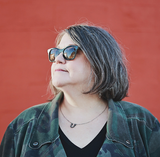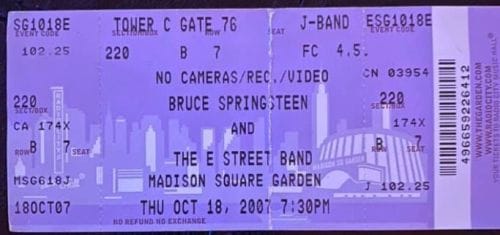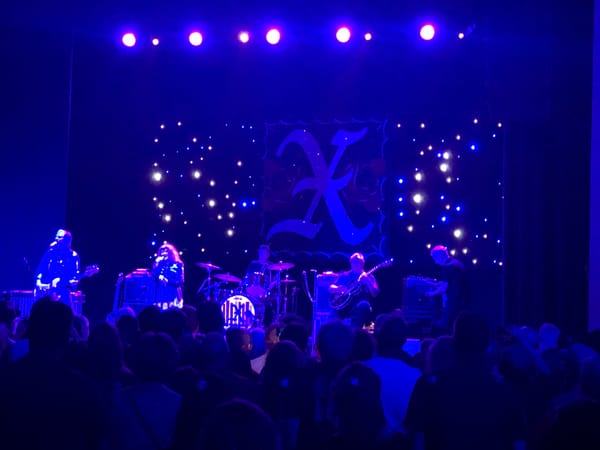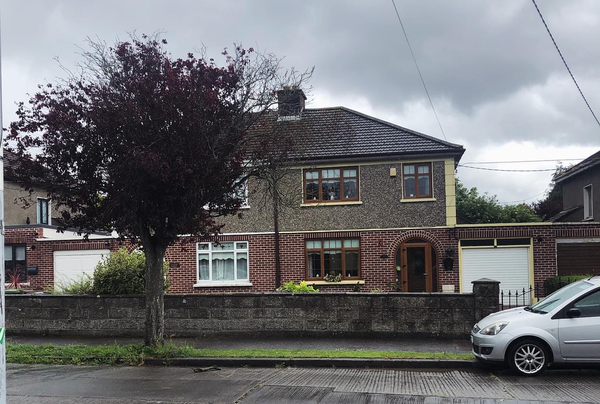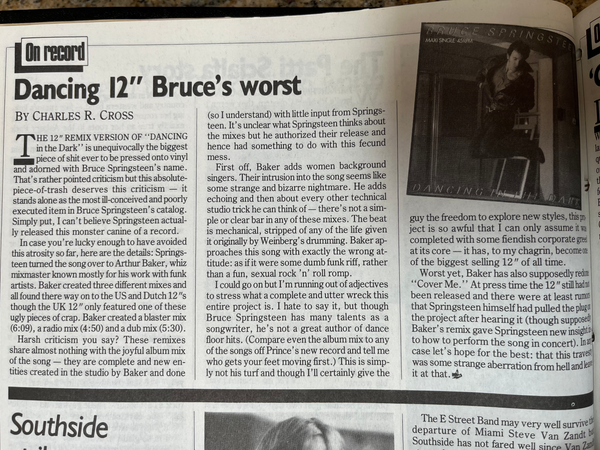In which I talk to Joel Bernstein about "The River," Joni Mitchell and more
an unpublished 2016 interview
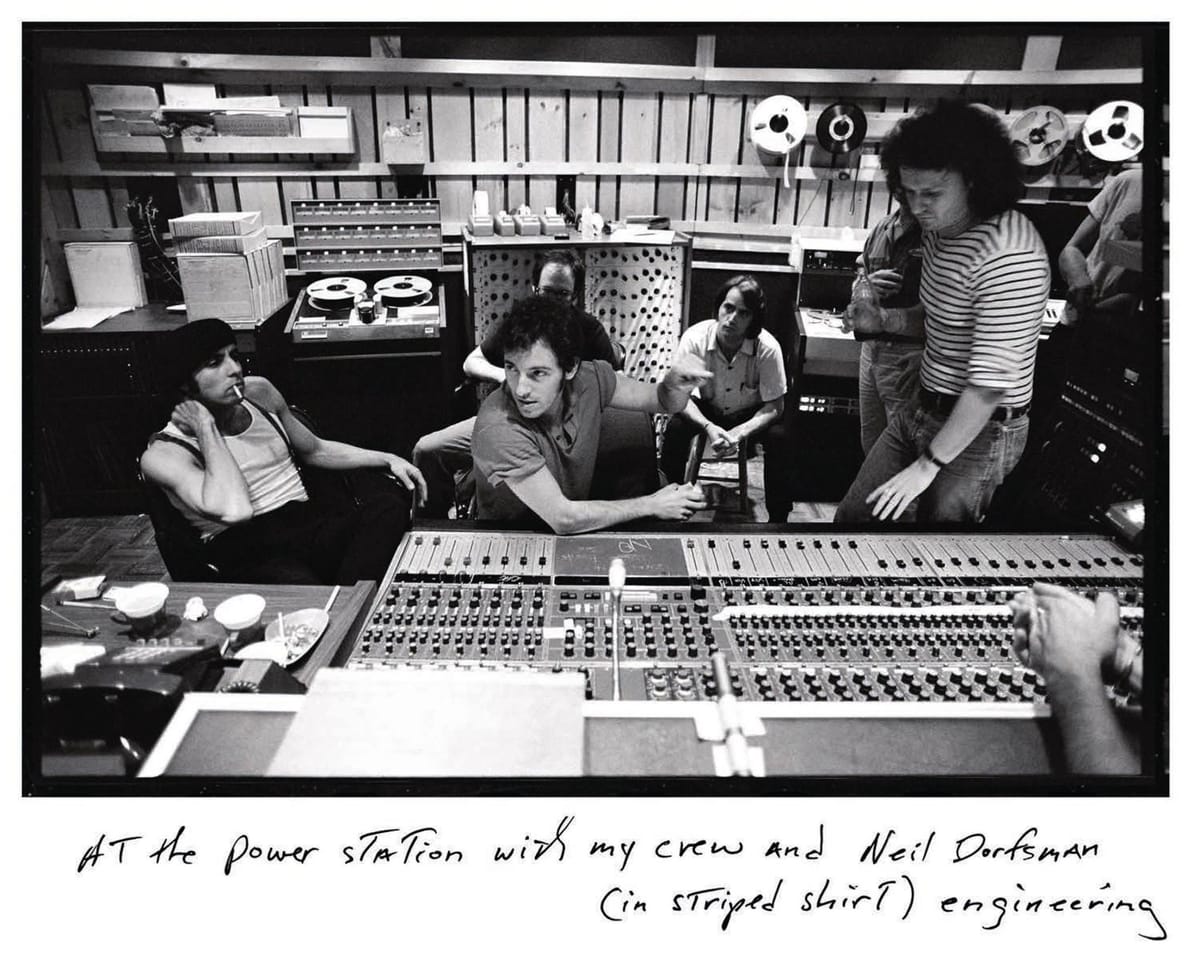
Since I am unable to send out a review of the Columbus Springsteen show this week (because it was cancelled), I wanted to make it up to readers with this yet-unpublished interview I did with photographer Joel Bernstein back in 2016 which was meant to run in Backstreets. There was a Springsteen photo exhibit at Morrison Hotel Gallery which I covered for the Village Voice, and I took full advantage of that opportunity to talk to as many of them as I could for the piece. I also took advantage of the situation to go long with Joel Bernstein, who not only has an amazing history as a photographer, but also an amazing history as a confidant and producer and just one of those people who managed to Be There for many artists and occasions. We talk about his work that was in the box set for The River, so you may want to pull that out as you read along.
When Joel Bernstein arrived in New York to take photographs of Bruce Springsteen in the late summer of 1979, he had already documented key moments and worked with pivotal figures in rock and roll history. Joni Mitchell asked him to be her personal photographer when he was 16 years old. At 18, just out of high school, he shot his first album cover, which just happened to be Neil Young’s After The Gold Rush. Bernstein was also behind the scenes on Bob Dylan’s Rolling Thunder tour in 1975 as the guitar technician, and captured the action on Jackson Browne’s “Running On Empty” tour in 1977. And then there’s his work with Crosby, Stills and Nash, or Tom Petty, or his current role as Neil Young’s archivist. In short, the man has bona fides.
So when Bernstein arrived at the Power Station at the start of the Ties That Bind sessions, he brought all that background and information with him, and it clearly informed his relationship with Springsteen, the band, and the photographs he took.
On the occasion of the recent Morrison Hotel Gallery Springsteen exhibition, Backstreets had a chance to talk to Bernstein about his memories of that time.
Backstreets: Your entree into this particular time--and I’m paraphrasing--was that you told Jon Landau that you loved Darkness, you loved the music, but you didn’t like the album cover.
Bernstein: It wasn’t that I didn’t like the cover itself, I didn’t think it was appropriate for the music or the title. Not even the photo; it was the lighting, is what I said to him. It’s not like it’s a bad photo of Bruce--although it is a little wooden, d’you know what I mean? As a portrait? The wallpaper is one of the nicest things about it.”
My thing is, if you’re doing album covers--my first album cover was After The Gold Rush by Neil Young--which is an example, by the way, of, like--I didn’t understand why at the time he chose the cover that he did. He did it immediately when I showed him the print, I was literally like a week out of high school. And only later did I understand what that meant to him. And I still feel like, in terms of--imagine sitting down with your music friends, and doing a list of best album covers, for example--that’s one list. A different list is album covers, and a more important list to me, is album covers that are most appropriate for the music inside them. Right? If the cover is the icing on the cake, and the cake, the substantial part of it is the actual music, and you’re illustrating that, and you’re codifying what are really 10 or 12 disparate songs, in the album age, you’re putting together in a way that’s supposed to unify them, which you’re doing with the title and the image. To me at the time Darkness was--the lighting in particular just bothered me. It was like bulb lighting, it was like a bulb light in a reflector? The kind of lighting you’d see in a yearbook of something.
Backstreets: I never thought about it that way, but yes, absolutely.
Bernstein: Just like, why are we seeing Bruce--who is fine himself, has the jacket, etc.--it just bothered me. I don’t even remember why I would be saying this to Jon. I honestly don’t, what the occasion was or how that happened. But I believe that he called me like a week later or two weeks later, and said, ‘Hey, are you going to be in New York? I’d like you to take some pictures of Bruce and the band. So that was my entry. that was in ‘79.
Backstreets: Right. So you were there during the marathon at the Power Station.
Bernstein: So the shot behind the console would be my shot.
Backstreets: Right. And that shot to me is, it really sort of represents, out of almost all of the photos--that one and the one of him at his writing table--it really represents a sort of time capsule of things that don’t happen any more.
Bernstein: Those are absolutely true.
Backstreets: The fact that you could take the photo, and that they would let it be used--
Bernstein: Which is also something that doesn’t happen any more, or barely.
Backstreets: That photo, especially in the context of the book for the box set, it says everything. It says more than sixteen paragraphs of history of what it was like for the band and for Bruce and for the production team.
Bernstein: Wow, that’s saying a mouthful. Thank you so much. That’s a real compliment.
Backstreets: Just the expressions on their face, their body language--
Bernstein: Yes. I love Miami Steve, I love the left to right, the sweep of that shot. And I love that Bruce is intently listening to someone, who we don’t know, I bet it’s a band member, who’s gesturing--the person with the hands in the lower right, that are blurred, which shows you how little light there is. In other words, I’m hand-holding this shot, it’s 1/8th of a second, or 1/15th, it’s not even 1/30th of a second. Just getting it is not that easy.
In fact, those shots and particularly the shots of them--I believe it was a last minute thing to ask me into the Power Station, into the studio, and I never shot with a flash, I was like, adamant, about using available light. It was the first time where I really wished I had a flash. I had this shot that was made into a pin at the time, it was color and black and white of them, Bruce is sitting in the center. This is not the shot we’re talking about, but an earlier shot. I think it might have been in the album? It was like, Jesus Christ, if I just had a flash and could bounce it off whatever ceiling there was, I’d have a fantastic, classic shot, and as it is I’ve got this grainy thing where people’s eyes are sunken in by the shadows of the harsh lights from the studio. So it sort of got me into that.
But back to the recording shot, the console--needless to say, there’s rolls of that, and some close ups of Bruce that--I think they used some ones of David Gahr’s, of close ups in the studio, but I think I have similar ones. I have to really check.
Thank you for noticing the thing about how they--I love that Bruce is eating an apple. I love that Jon is sitting right where he’s sitting. The whole thing is if I was, like, those Dutch masters paintings where there’s groups of people and everything is significant about who’s in front, and who’s over here, the black-robed people...
Backstreets: The intentional hierarchy of society is reflected.
Bernstein: So this has that kind of thing going on in a way.
Backstreets: And of course, none of this was actually conscious in your head at the time.
Bernstein: Oh my god no, I was just documenting it, totally, I just wanted to get it. [Laughs] And I’ll say--needless to say now i’m very happy that I did get that, but in a way I was equally happy but possibly more happy to get the shot of him at the writing table. And to see his caption [see below]. I mean, I didn’t know that’s what that was, you know what I mean? I was staying at that point at his house, that big house, when it was just him living there.
[The caption reads, “This was the corner of my bedroom where I wrote for Darkness On the Edge of Town and The River. I wrote a lot of good songs (“The River,” “Hungry Heart,” “Badlands,” “Prove It All Night,” just to mention a few) in that chair at that table. I’d often keep basic tracks we’d cut in the studio on cassette on top of my player. I’d pop one in and keep rewinding it until I’d come up with suitable lyrics.”]
Backstreets: The Telegraph Hill house, with the paneling, that we’ve now seen in photographs.
Bernstein: So the paneling, and the rehearsal shot that I did, the wide-angle rehearsal shot, all of that stuff. And there’s only one frame of that shot, and I feel like--there’s only one frame of him sitting on the railing [the shot of Springsteen on Wesley Lake with the Palace behind him], I think I did one color and one black and white--and sometimes when you do that, at least me, if you’re maybe a more aggressive photographer like Jim Marshall, you would just be smelling blood and going right in for it, and you really wouldn’t be caring about, ‘Am i discomfiting the subject?. Am I making them uncomfortable in some way?
There’s something about--in the shot by the writing table, do you see that actually, that he must be listening to music? See his hands? He’s beating, he’s slapping his knee, he’s keeping time with his hands as he’s listening, and i must have like passed by his room, or was wondering--I had my camera with me, ‘Hey bruce do you want to go outside,’ something like that that would have me actually come up to the doorway of his bedroom, see what I mean? unless he asked me to come up, i have no idea, i really don’t remember the moment. but what it looks like to me is, I’m looking in and he’s playing music, and it’s like, i’ve got to get this shot, and i do one and get the shot, because it’s too intimate. That’s what it strikes me as.
Backstreets: And also, any more and the moment would have been gone.
Bernstein: Then he has to pose. To me, it’s like he’s right in the middle of listening, and he just looks up or looks over--BOOM. There’s no, I’m not, it’s very immediate, how he looks and what he’s doing and where his body language is, he’s facing--he’s doing what he’s talking about doing, putting a cassette in and playing along with it, thinking about what words he wants to do for that verse or that track that he’s describing.
Backstreets: Then there’s the dictionaries, the stacks of cassettes--
Bernstein: The dictionaries are just fantastic, and the stacks of cassettes are fantastic, and how about the back cover of Henry Fonda reads The Grapes of Wrath. And the Peter Tosh album that you see the corner of. When I first saw the Grapes of Wrath, I saw it and thought, ‘Oh, this must be the back cover of the soundtrack album, with James Dean, and I’m thinking, like, ‘Wow, how cool that he’d have the soundtrack album to The Grapes of Wrath!’ But it’s even cooler! It’s 1979! Henry Fonda on Caedmon, like authors and actors reading literature and poetry--that’s what that label did. And you’d find those records in bookstores, you didn’t find those in record stores, usually. A little spoken word section, or literature, it’d be tiny, back at the time, where you’d find those records. It’s just interesting to me in terms of his progression towards Woody Guthrie--food banks, unions.
Backstreets: He’s been saying that ‘This is the gateway to everything I did next.’
Bernstein: Yes, I think I read that somewhere recently, maybe in Pittsburgh he said it? In retrospect--I was one of those kids, in the late 70’s, I’m working for Neil Young and Joni Mitchell, and on tour with Crosby & Nash, and Bob Dylan’s Rolling Thunder, and I have lots of other things going on. And the 78 shows, the radio broadcasts...we all got to hear those at different times and different quality, whatever, but I had a friend who worked at Columbia Records that sent me a set of the white-label promo cassettes that were just meant for internal Columbia use, to get people at Columbia excited about Bruce. And this was the set of the Kid Leo show, the Agora, on three cassettes, the whole show. And I just thought, this is the greatest fucking show, certainly it’s the best Bruce Springsteen anything I’ve ever heard, and if I had one Desert Island anything to play, it’s that show because it’s so genius, everything’s so cool on it, so in the pocket. And it really renewed--like many people’s--interest in his writing.
I actually have, I remember sitting there when he was teaching the band “The River.” I don’t know why, why he invited me to be in the control room. I don’t--I think the shot I took there is in August ‘79. So to be fair, it’s actually The Ties That Bind sessions, right? You could call it “The River” session, you could say, ‘Well, The Ties That Bind never came out”
Backstreets: The first time he played “The River” live was at No Nukes.
Bernstein: This was the night before that, at the Power Station, where--not when I’m taking these pictures. I don’t believe I took pictures, I don’t think I had a camera there, I think, one of the band members said to me, ‘Wow, man, he never asks people to come in, like, nobody’s ever here.’ So I thought, ‘I’m just gonna shut up and watch’. [laughs]
And I watched him teach the band the song which he had just finished, starting with an acoustic guitar. And by like 2 or 3 am in the morning they had it mastered. And the lyrics so impressed me that I wrote them down in a notebook, the whole song--and it really reminded me of Jackson Browne in a way, given that I was on the ‘Running On Empty’ tour, I sang--it reminded me. I never thought of Bruce as that kind of writer, but there was a seriousness and a beauty, how that song is structured, how the story is structured, and how the river becomes, there’s different aspects, the river is different every time it’s repeated at the end of each chorus. So I was really knocked out by it. I remember --it wasn’t one of those things where ‘Five years later I realize I have seen this fantastic [thing]’ - I knew it at the time, needless to say.
Backstreets: And then you go to see it live.
Bernstein: And then I got to see it live, and it was like, ‘This band is awesome!’ It was like something like 2 or 3 in the morning the same day! Now it’s like 10 at night! And they’re killing it live! I was really impressed.
Backstreets: Your work with Neil--if Bruce didn’t know about it, Landau knew about it...
Bernstein: I remember Bruce talking with me about working with Bob and working with Joni, and what they were like. Of course when you’re shooting Bruce and you’re mentioning it to anybody at the time, they’re like, ‘Oh, wow, you shot...what’s he like?’ So it was surprising, I guess, or I guess it shouldn’t have been, that Bruce was asking me about what it was like to work with Neil and Joni and Bob. He would have heard about all of them.
Backstreets: Obviously, but your specific relationship to them is fascinating and its own story, some of the challenges and stories that you have from being there. Did he ask about Rolling Thunder? Is there anything that you can recall in the history of those artists that you’re so closely aligned to that you got to share any of those stories with him?
Bernstein: That’s a really good question. I think I was describing how they seemed to me as people and what their relationship to how they worked, like the intensity, the focus that Neil had, let’s say, and the single--I mean, Joni’s...I remember us talking about, I remember talking with him about the Hejira album and being with her when she was writing parts of it. And I was actually in New York with her when she wrote the song “Hejira,” was writing it--and actually she was with me when she wrote “Song For Sharon”--’I went to Staten Island/To buy myself a mandolin,” do you know that?
So that was a day that she and I spent together. I took her to the Mandolin Brothers on Staten Island, she wanted to buy a guitar, and they were like the best dealer for pre-war, for vintage Martin guitars at the time. And the whole song, not the whole song, but the narrative of the song was basically the day that we spent taking the ferry from New York and going to the store. We were in a taxi and she turned around and said, we passed a wedding salon on Staten Island, on the corner, with the big, a large glass display window, with a mannequin with the most elaborate wedding dress in all of Staten Island.
Backstreets: Which says a lot, because that’s Staten Island.
Bernstein: In other words, that’s what it was like to me. [laughs] And she turned to me and said, ‘Some girl’s gonna see that dress and want to get married.’ So I remember telling Bruce about that. And I remember him, now that I’m thinking of it, I’ve always wondered why those wedding dresses were on the River album, I didn’t understand about the band getting married,, what it meant to him, I didn’t know why those cut out figures the store window--
Backstreets: The back cover.
Bernstein: Right, the back cover thing.
Backstreets: And now it makes so much sense with everything he’s talked about, about--he was trying to figure it out, his friends were getting married--
Bernstein: It completely does. Now I really get it, when I started reading about that,, it completely. I mean, Thom Zimny told me that this is not so much a making of album, as the idea that Bruce is so bereft, and so--living such a lonely life, and feels so--
Backstreets: There’s a shot that Zimny has, where Bruce just sort of looks down to the side, and he says with a sort of wry expression, with a raised eyebrow, back at the younger version of himself, “It was a mystery how people were successful at those things.”
Bernstein: Yes! Totally! Right. And also, he's already the Prince of New Jersey. It’s as if the prince can’t find a bride in the kingdom, how is this possible? Every woman in the kingdom wants to be the princess.
Backstreets: That’s a tremendous connection.
Bernstein: And I also remember him saying to me, in the same conversation, well i can tell you that my favorite album of all time, he says to me, is Hissing of Summer Lawns by Joni Mitchell. Now, that’s really amazing coming from Bruce in 1979, because it also informs--if you’re competing, if you’re Joni Mitchell and you’re in this milieu with Crosby, Stills & Nash, and there’s a sort of jovial competitiveness, and you’re living with Graham Nash or whatever, you can easily outwrite Crosby, Stills & Nash. [laughs] But when Stevie Wonder then puts out Talking Book, you’re going to be completely blown away, and you’re going to make new goals for yourself.
So similarly I think if you’re Bruce, and you’re following Joni and her writing, and you get to Hissing of Summer Lawns, and the portraits within, because it’s the first time where she’s really--not the first time, because “Marcie” on her album is a great portrait, which comes about from, which is inspired by Leonard Cohen’s “Suzanne,” the idea of ‘Oh, a portrait! Oh, I could do a portrait!’--but I’m saying that Hissing of Summer Lawns is notable because it’s not confessional, not nearly--the confessional stuff is in there somewhere but it’s more about her portraits of others.
Backstreets: Yes, and that is exactly what Bruce was trying to do at the time.
Bernstein: Right. And I think that his noticing that about portraits, I just think about him being into that album--I never would have imagined.
Backstreets: That’s not the answer I would have expected either.
Bernstein: There’s just the jazziness of it, you would have thought that would have been off-putting to him. You would have thought, that’s not rock and roll. The other thing I should say, this is all happening in a context when, you know, you look at that shot of Bruce and Clarence on the park bench that I did, so it’s like Bruce is from Grease--I mean the movie, the play--the hair, the jacket, the vibe, the look, and to me, where Clarence is like from Shaft. Clarence’s coat and his attitude--so that’s always interested me.
Bruce--isn’t he born in ‘49? I’m born in ‘52, not that much older, but he was far more steeped and influenced by 50’s music, I was kind of a 60’s folkie, serious folkie. And so it was interesting to me that, we’re going down the highway in the Corvette or the truck, and he puts on what-- a Sun Records compilation, he puts on Roy Orbison, you know? And I think that he had, I think that his goal was to try to do what Elvis did but write his own material, not be beholden to other material, to be the writer, but to also be like Elvis and not be derailed by fame or drugs. And I think that definitely came out of our conversations, I don’t know how, but I definitely came away with that impression. Which was--I didn’t know anybody who was looking to Elvis for inspiration.
Backstreets: Well, not at that time, no one was looking at him.
Bernstein: Well, the Beatles and Bob Dylan took that all, this is a whole other thing that’s rolling over everything, and influencing everything. In the same way it’s interesting, the Basement Tapes in ‘67, it’s fascinating that this is taking place right after Sgt. Pepper’s when everyone else in the world is just going fucking crazy over that. It’s as if it never even came out, when you listen to The Basement Tapes. They’re like in another world.
And so I think that Bruce, it was just interesting to me, that he was, in other words, in terms of iconography, in terms of his--he was very focused, it was intent to not fail. Not about success, but to not fail in--knowing the skills he had as a musician and performer, he didn’t want to lose his way. I feel that he saw people losing his way, and that’s why he was like, ”No! You’re not smoking pot.’ to the band, let’s say. I think that it was like, ‘Don’t derail this thing. Have the same kind of single minded-ness of focus that I bring to the party here.’
Backstreets: That’s very interesting that you say that, because there’s a story in one of the biographies that came out [Bruce, by Peter Ames Carlin] in the last couple of years where somebody walked in on two of the band members doing cocaine, they don’t say who, and their reaction was to turn to Bruce and say, ‘Do you want some?’ and Bruce said, ‘No, and I never want to see this again!’ He told his road manager that he would fire anyone that he ever caught doing that again. The thought doesn’t continue in the way you continued it, that story adds a component of, it isn’t just that Bruce is a control freak about drugs, there’s a very specific vision he was following.
Bernstein: One of the band members told me a very similar story but it was about Bruce leaning on him when he was smoking a joint somewhere he didn’t expect Bruce to be. And that Bruce was like, ‘What the fuck are you doing?’ kind of thing. And again, it’s not like ‘I’m going to be a tyrant and I’m going to lay my vision, because I can’t deal with this, I don’t want you to deal with it.’ It absolutely had to do with, I think that he saw a great tragedy in Elvis, I think that he looked at Elvis’ arc from the first album, being a truck driver, and then you get this, and then you get the bad manager, and then the manager tries to rip you off, and then they set you up with these stupid movie deals that make you a parody of yourself, or people are using your name to make money for themselves. There’s this whole arc that ends up with you being bloated and you’re something to mock.
And I think he had a version of ‘That’s what’s going to happen to you, some version of that’s gonna happen to you.’ And by the way? In 1979, you have plenty of examples of rock star bad behavior and over-indulgence, and proof of that going. Can you imagine, you’re Bruce and you read about Joe Walsh chain-sawing the TV into the pool of the hotel, or just like the amount of blow that has come up from when it’s just pot in the late 60s and 70s, and then people, especially musicians, really start getting into cocaine. So by the end of the 70s, drug that’s popular. Pot is like archaic at that point.
Backstreets: He probably looks on it a little more kindly now. When Danny Federici passed, he told a story in his eulogy about the time Danny had a pot plant in the front seat of his car, and it was stolen, and Danny came to rehearsal and said, I have to go to the cops and report that stolen, and Bruce says, ‘I don’t think that’s a very good idea.’
Bernstein: You’re kidding! Wow. That is just fucking amazing. [laughs]
Backstreets: So you walked out of the session with a copy of the tape.
Bernstein: He gave it to me! I said, ‘God I love this!” I was really into it. And he let me copy, he had one tape of it, and played it for me, and then later, I don’t remember, I should remember but I don’t, whether I said--I can’t imagine my asking him for it, he must have said, ‘Hey, you know, if you want to take this with you, you have a cassette--” I had a portable cassette, I was listening to music all the time on that. He said, ‘If you can do it, just make a copy for yourself.’ And I was like, Jesus Christ, I guess he really trusts me. I mean, we didn’t know each other that well, but I guess he got a good vibe from this guy.
Backstreets: You were going to stay at his house.
Bernstein: [Laughs] Right. By the way, there’s shots that weren’t used--by the way, I honestly don’t know what was used in the Thom Zimny piece--I have pictures of the whole band gathered around the TV, watching something on TV.
There’s a shot of Bruce and Clarence in the hallway outside the living room, and they’re both eating a bowl of cereal. When I read about the quote about the lost boys, these shots perfectly illustrate that.
Backstreets: So do you still have the tape?
Bernstein: Sure, I have the tape. It still exists; it has my writing on it. Columbia asked me about it, and they said, ‘Oh my god, does it have Bruce’s writing, because we want to shoot it.’ They would have loved that. And I said, ‘No, it just has my writing on it, and it says something like, ‘From Bruce’s copy,’ or something like that.
